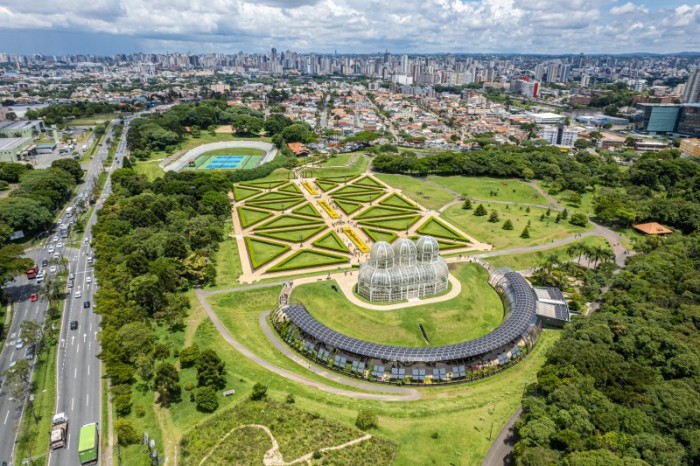[et_pb_section fb_built=”1″ _builder_version=”4.16″ global_colors_info=”{}”][et_pb_row column_structure=”2_3,1_3″ _builder_version=”4.16″ global_colors_info=”{}”][et_pb_column type=”2_3″ _builder_version=”4.16″ custom_padding=”30px|30px|30px|30px” global_colors_info=”{}” custom_padding__hover=”|||”][et_pb_text admin_label=”Category title – Manual” _builder_version=”4.21.0″ text_font=”|700|||||||” text_text_color=”#848484″ text_font_size=”12px” text_letter_spacing=”2px” hover_enabled=”0″ border_style_all=”none” global_colors_info=”{}” sticky_enabled=”0″]
DESTINATIONS
[/et_pb_text][et_pb_divider color=”#ffffff” _builder_version=”4.16″ height=”15px” global_colors_info=”{}”][/et_pb_divider][et_pb_text admin_label=”blog title” _builder_version=”4.16″ global_colors_info=”{}”]
Guide to identify a traditional Buenos Aires café
[/et_pb_text][et_pb_divider color=”#ffffff” _builder_version=”4.16″ height=”15px” global_colors_info=”{}”][/et_pb_divider][et_pb_text _builder_version=”4.16″ text_orientation=”justified” global_colors_info=”{}”]
If the place is old, with lots of wood, posters and photos, if the waiters are wearing shirts and waistcoats, if the menu offers medialunas: then you are in a real Argentine café!

You are sitting at an old wooden table on the Avenida de Mayo. Your chair has probably been the seat of iconic figures such as Jorge Luis Borges, Federico García Lorca, Alfonsina Storni, and even Carlos Gardel. An elegant-looking waiter gently places the tray on the tablecloth. The unmistakable aroma of a freshly served cup of coffee is captivating. The succulent taste of “medialunas” (Argentine butter croissants) invades your taste buds. These two wonders combined create a magical experience for the palate. There is no room for doubt: you are in a traditional Buenos Aires café in all its glory.
Every October 26th is celebrated: Buenos Aires Coffee Day; in honour of Café Tortoni, the oldest in the capital. Founded in 1858, it is located just below the Academia Nacional de Tango. Between 1926 and 1943, the famous popular Peña del Tortoni party, organised by the famous painter Benito Quinquela Martín, was held in its basement. It was the scene of countless debates, readings, songs and debates of ideas between some of the most prominent people in the world.
Among the most important are the Café de los Angelitos, Margot, 36 Billares and Las Violetas, which were once the meeting points for hundreds of musicians, politicians, writers and artists of all kinds. Walking through their doors, you can go back in time and imagine the dozens of anecdotes, secrets and stories hidden within their walls. It’s the ideal place to get to the heart of Argentine traditions, and share discussions and encounters while enjoying an excellent coffee.
Here are ten tips for identifying them:

They have an old architectural design
The architecture dates back to the last century. You can still see the original mosaics, the majestic arches, the pale colours of the signs, the ironwork, the sturdy columns and the huge chandeliers hanging from the high ceilings.
They are located in some of the most emblematic neighbourhoods of Buenos Aires
San Telmo, Monserrat, La Boca or Recoleta: with cobbled streets that breathe culture, entire neighbourhoods filled with fern trees, historic buildings and corners that still reflect the golden age of Buenos Aires.
They have received the honorary distinction of “Bar Notable of the City of Buenos Aires”
They probably have a sign right next to the entrance door with a plaque that says Bar Notable (Historical Café). Spread over more than 25 districts of the capital, there are almost 100 bars and cafés that have received this special mention. The reason? They are more than just a place to have breakfast or a coffee: they are part of the country’s identity.
They are linked to historical cultural activities
Some were the site of irresistible book clubs with famous writers, such as Cortázar; others were the scene of clandestine political meetings. One of them even saw Gardel sign his record contract, and many other artists followed.
They display a unique decoration
Thousands of mirrors, paintings and photos decorate the place, probably representing or showing famous people who frequented these cafés. You can also find old crates and bottles of soda water embellishing the place.
They all have football club crests
It’s a classic in Buenos Aires cafés, bars and restaurants: few countries are as passionate about the sport as Argentina. And this is also reflected in the décor: hanging flags, portraits and football shirts of all the national teams and, of course, the Argentine national team.

They have wooden facades
Very characteristic of the period, inside you can see a lot of wood: on the tables, chairs, walls, and even on the counter.
The waiters wear shirts, waistcoats and bow ties
The elegance of another era, always refined and with immaculate uniforms, they usually wear a badge with their name. Master jugglers, they are experts at loading trays with hundreds of cups of coffee without spilling a single drop at an astonishing speed.
They will also remember your order by heart without writing it down
Argentine waiters have an amazing memory and don’t need to write down customers’ orders. Some even remember the names of regular customers and will tell you what they usually order without even asking.
The menu includes typical Argentine specialities
From the most classic delights, such as café au lait, inverted cortado or cappuccino, to savoury treats, such as medialunas with hot butter, churros stuffed with dulce de leche or tostado (grilled ham and cheese sandwich)… Gastronomy, once again, shines in the country at the end of the world, and must be savoured in the great historical cafés.
Source: Visit Argentina
[/et_pb_text][et_pb_divider color=”#ffffff” _builder_version=”4.16″ height=”48px” global_colors_info=”{}”][/et_pb_divider][et_pb_video src=”https://youtu.be/pVY1JbhtRN8″ image_src=”//i.ytimg.com/vi/pVY1JbhtRN8/hqdefault.jpg” _builder_version=”4.16″ global_colors_info=”{}”][/et_pb_video][et_pb_divider color=”#ffffff” _builder_version=”4.16″ height=”48px” global_colors_info=”{}”][/et_pb_divider][et_pb_cta button_url=”https://quimbaya-tours.com/en/our-destinations/argentina/” url_new_window=”on” button_text=”Visit Argentina” admin_label=”visit members page” _builder_version=”4.16″ use_background_color=”off” custom_button=”on” button_bg_color=”#0c71c3″ button_border_radius=”100″ global_colors_info=”{}” button_text_size__hover_enabled=”off” button_one_text_size__hover_enabled=”off” button_two_text_size__hover_enabled=”off” button_text_color__hover_enabled=”off” button_one_text_color__hover_enabled=”off” button_two_text_color__hover_enabled=”off” button_border_width__hover_enabled=”off” button_one_border_width__hover_enabled=”off” button_two_border_width__hover_enabled=”off” button_border_color__hover_enabled=”off” button_one_border_color__hover_enabled=”off” button_two_border_color__hover_enabled=”off” button_border_radius__hover_enabled=”off” button_one_border_radius__hover_enabled=”off” button_two_border_radius__hover_enabled=”off” button_letter_spacing__hover_enabled=”off” button_one_letter_spacing__hover_enabled=”off” button_two_letter_spacing__hover_enabled=”off” button_bg_color__hover_enabled=”off” button_one_bg_color__hover_enabled=”off” button_two_bg_color__hover_enabled=”off”][/et_pb_cta][/et_pb_column][et_pb_column type=”1_3″ _builder_version=”4.16″ background_color=”#f4f4f4″ custom_padding=”30px|30px|30px|30px” global_colors_info=”{}” custom_padding__hover=”|||”][et_pb_divider color=”rgba(255,255,255,0)” _builder_version=”4.16″ height=”15px” global_colors_info=”{}”][/et_pb_divider][et_pb_text admin_label=”side title” _builder_version=”4.16″ global_colors_info=”{}”]
RECENT POSTS
[/et_pb_text][et_pb_divider color=”rgba(255,255,255,0)” _builder_version=”4.16″ height=”15px” global_colors_info=”{}”][/et_pb_divider][et_pb_blog posts_number=”3″ include_categories=”269,220,219,1459″ show_more=”on” show_author=”off” show_categories=”off” show_pagination=”off” _builder_version=”4.21.0″ header_level=”h5″ header_font=”|600|||||||” header_text_color=”#0c71c3″ custom_css_content=”display: none;” global_colors_info=”{}”][/et_pb_blog][/et_pb_column][/et_pb_row][et_pb_row _builder_version=”4.16″ background_size=”initial” background_position=”top_left” background_repeat=”repeat” global_colors_info=”{}”][et_pb_column type=”4_4″ _builder_version=”4.16″ custom_padding=”|||” global_colors_info=”{}” custom_padding__hover=”|||”][et_pb_text admin_label=”You may also like:” _builder_version=”4.16″ global_colors_info=”{}”]
You may also like:
[/et_pb_text][et_pb_post_nav in_same_term=”off” prev_text=”%title” next_text=”%title” _builder_version=”4.16″ title_font_size=”18px” global_colors_info=”{}”][/et_pb_post_nav][/et_pb_column][/et_pb_row][et_pb_row _builder_version=”4.16″ custom_margin=”20px||1px|” custom_padding=”1px||1px|” global_colors_info=”{}”][et_pb_column type=”4_4″ _builder_version=”4.16″ custom_padding=”1px||1px|” global_colors_info=”{}” custom_padding__hover=”|||”][et_pb_text admin_label=”SHARE THIS ARTICLE:” _builder_version=”4.16″ custom_margin=”1px||1px|” custom_padding=”1px||1px|” global_colors_info=”{}”]
Share this article:
[/et_pb_text][/et_pb_column][/et_pb_row][/et_pb_section]







